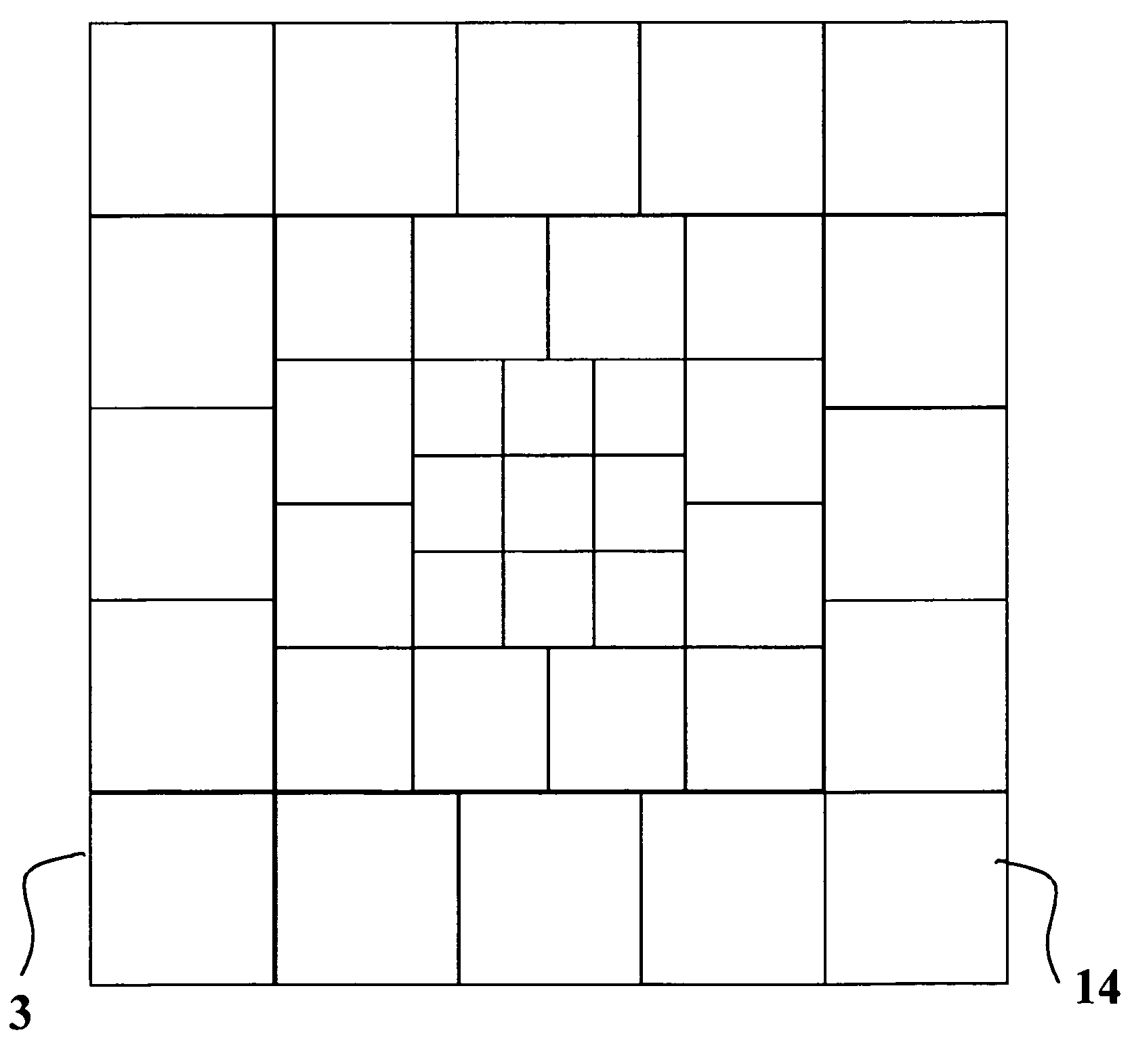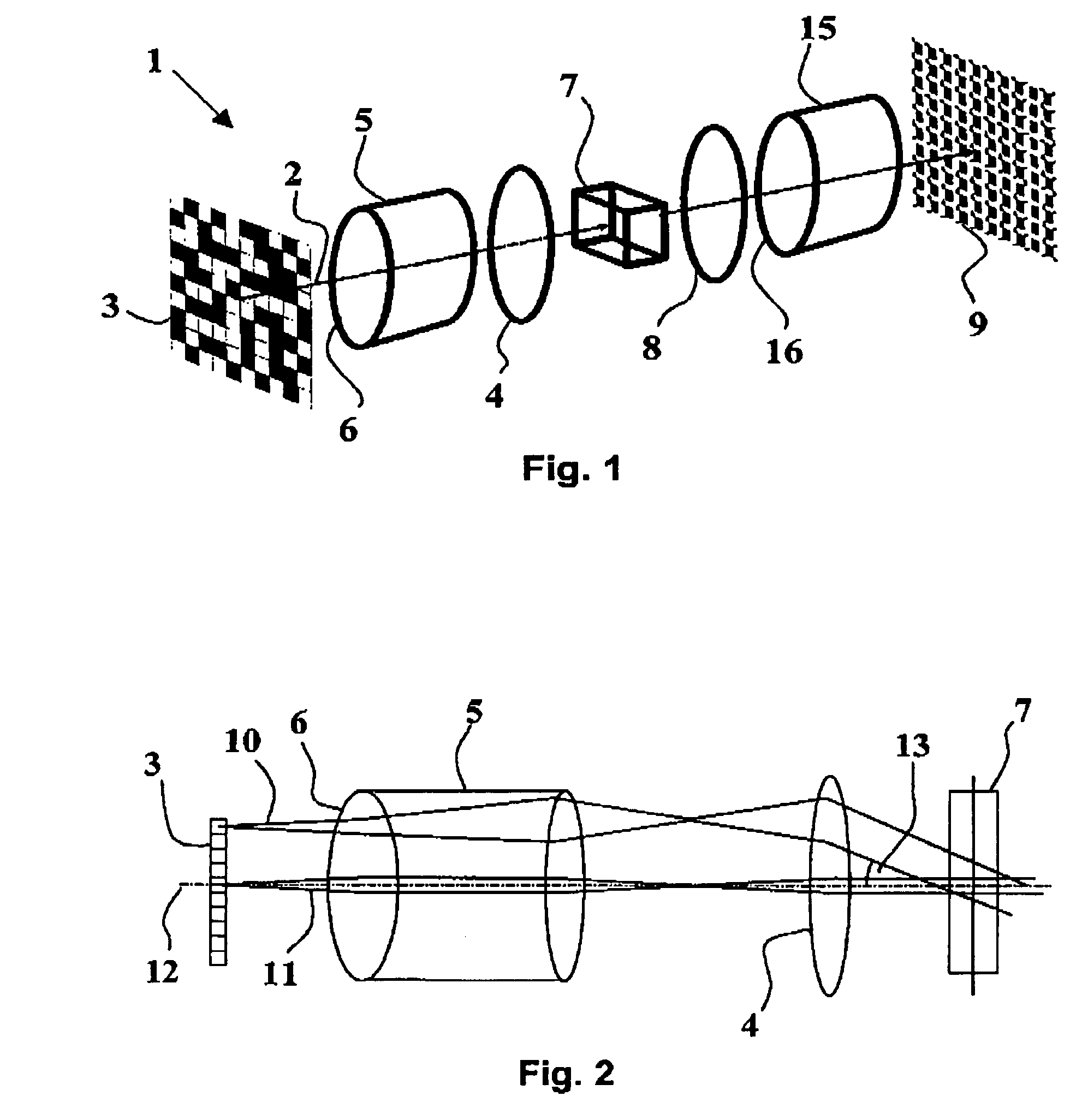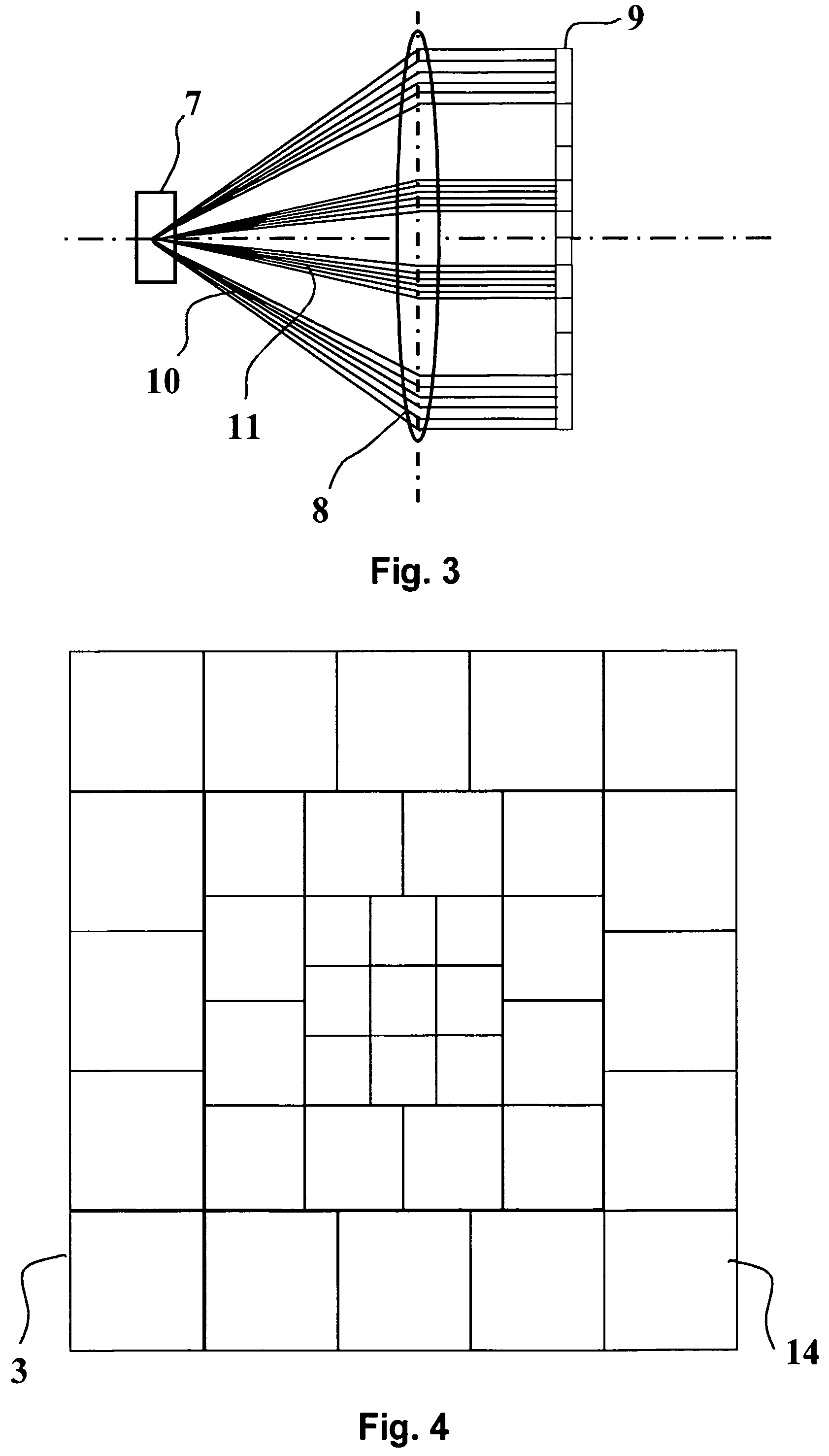Data page pixel shaping for holographic recording
a technology of holographic recording and data page, applied in the direction of optical recording/reproducing/erasing methods, instruments, optical beam sources, etc., can solve the problems of snr decreasing in limiting the storage density of holographic storage systems, and reducing the snr of the image of the light beam, so as to improve the storage capacity of holographic storage media
- Summary
- Abstract
- Description
- Claims
- Application Information
AI Technical Summary
Benefits of technology
Problems solved by technology
Method used
Image
Examples
Embodiment Construction
[0030]FIG. 1 shows an apparatus 1 for reading from and writing to holographic recording media in a perspective view. The apparatus 1 includes a light source, which is not shown in the drawing. The light source generates a light beam 2, which in this example is illuminated into the apparatus in a transmitting arrangement from the reverse side of a spatial light modulator 3. It is likewise possible to use a reflective arrangement for this purpose. The profile of the light beam 2 illuminating the spatial light modulator 3 undergoes a modulation by passing the spatial light modulator 3. In the figure the modulation is carried out as bright or dark pixels. Of course, other types of modulation can be used as well. Each single pixel represents a bit, and the whole field composes a data page. All components of the apparatus 1 are arranged on an optical axis.
[0031]A beam shaping optics 5 is arranged between a writing objective 4 and the spatial light modulator 3. In order to magnify the oute...
PUM
| Property | Measurement | Unit |
|---|---|---|
| sizes | aaaaa | aaaaa |
| field angle | aaaaa | aaaaa |
| size | aaaaa | aaaaa |
Abstract
Description
Claims
Application Information
 Login to View More
Login to View More - R&D
- Intellectual Property
- Life Sciences
- Materials
- Tech Scout
- Unparalleled Data Quality
- Higher Quality Content
- 60% Fewer Hallucinations
Browse by: Latest US Patents, China's latest patents, Technical Efficacy Thesaurus, Application Domain, Technology Topic, Popular Technical Reports.
© 2025 PatSnap. All rights reserved.Legal|Privacy policy|Modern Slavery Act Transparency Statement|Sitemap|About US| Contact US: help@patsnap.com



